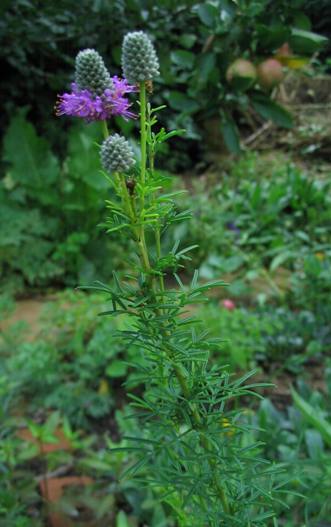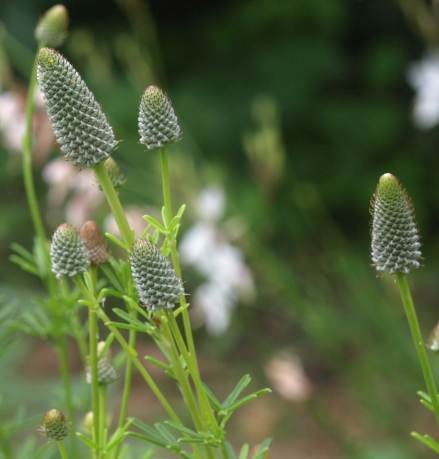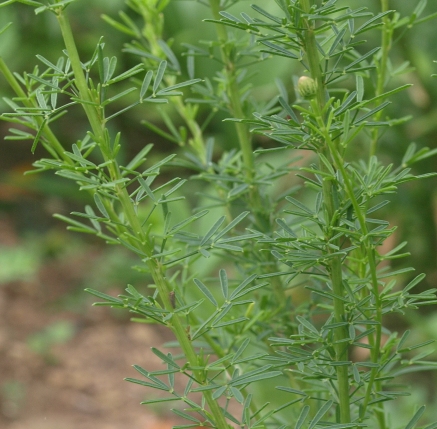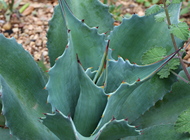 |
Dalea purpurea |
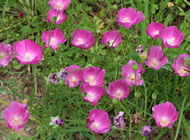 |
| Synonym(s) |
Petalostemon purpureus |
| Common name |
purple prairie clover |
| Family |
fabaceae |
| Life cycle |
perennial (Z3-9) |
| Flowers |
purple (mid-summer) |
| Size |
1-2' |
| Light |
sun |
| Cultural notes |
ordinary garden soil, drought-tolerant |
From seed  |
scarify, germinate at room temperature
detailed seed-starting info below
|
| Seed ripens | late September |
Slender plants with fine-cut foliage, topped with cheerful purple flowerspikes. Oddly, my AHS plant encyclopedia rates it hardy only in zones 9-11 (so I didn't expect it to come back this year, after growing it from seed last year), but all other information I've found says it's perfectly hardy. And that's fine by me.
The plant is very late to re-emerge in spring. In fact, I usually stop checking by sometime in May, and then notice plants sometime in July, so I don't even know when they do decide to pop their heads up. As a consequence, our main plant still lives in our nursery area, many years after it was first started from seed.
|
This plant used to grow in our garden, but it slipped away... About my plant portraits
PlantLinks to other web pages about Dalea purpurea
Visitors to this page have left the following comments| cliff | Feb 27, 2006 | I am studying this plant. last year I grew the plant from seed and ordered live seedlings. the live seedling plants were much bigger in the fall, sadly the plants were growen in less that perfect conditions. I was able to harvest a modest amount of roots for chemical studys.
as an amatuer ethnobotanist I am interested in the purported effects outlined in scant ethnobotanical data referring to the use of the plant by plains indians as an antidiarrheal and analgesic/tonic. a quick search led me to the information that the plant contains at least one opioid agonist.
I am interested in obtaining wildcrafted or farm raised roots and flowers of the plant, but so far have had no luck. The plant does not grow in the northwest where I live to my knowledge.
Looking at dalea purpureas profile I could see possible benefit of some cultures adopting the nitrogen fixing/medicinal qualities of dalea purpurea to their benefit.
nice website rob.
|
| PD Wythe, Meeker co, Mn | Jan 06, 2011 | I found this plant growing in native prairie(Z4) this past year. Lots and lots of them. I found out they do not transplant well. But they sure are pretty in bloom. You're lucky to have them in your garden. |
| Laura | Aug 29, 2014 | I've collected some Dalea purpurea seeds and was wondering how to "dehusk" them? Could you give more information on cleaning the seeds? Thank you! |
- Seed from '02 trade. Dehusked and scarified seed (little shiny tan teardrops). Baggy 70F (68%G, 8-80d). A new flush of germination occurred after a second scarification
- Same seed as above. Scarified with sandpaper. Baggy 70F (35%G, 4d)
- Seed from '04 garden. These seeds were dark brown and shriveled, didn't seem viable next to the shiny ones from the trade. Yet: No scarification. Baggy 70F (70%G, 4d)
- Seed from '07 garden. Baggy 70F (4w) - 35F (30d) - 70F (7w; no G)
- Seed from '08 garden. Baggy 70F (18%G, in flushes several days after scarifying with sandpaper)
Scarification is essential. No cold treatment required.
I welcome comments about my web pages; feel free to use the form below to
leave feedback about this particular page. For the benefit of other visitors
to these pages, I will list any relevant comments you leave, and if
appropriate, I will update my page to correct mis-information. Faced with an
ever-increasing onslaught of spam, I'm forced to discard any comments including
html markups. Please submit your comment as plain text. If you have a
comment about the website as a whole, please leave it in my
guestbook. If you
have a question that needs a personal response, please
e-mail me.
Last modified:
July 18, 2015
Contact me
|


